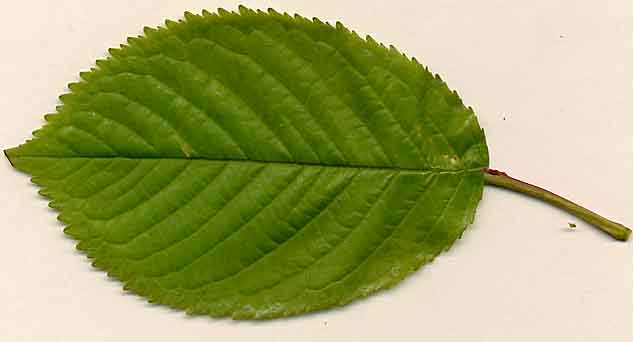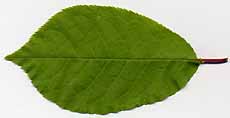copedirector
ArboristSite Lurker
Can wild cherry or choke cherry be used for smoking? Geographically the wood is from SE Nebraska.

Around here, wild cherry, black cherry and choke cherry are the same thing.I sell all my wild Cherry to BBQ and Smokers. But, I have access to more Black Cherry, which seems slightly different than the wild Cherry. I wonder if the Black Cherry would also be good for the smokers and BBQ crew.
Around here, wild cherry, black cherry and choke cherry are the same thing.
Many people here probably call it all the same too. But, I distinguish the Cherry from trees that are producing edible cherry fruit which are growing wild; that is not intentionally planted in orchards. From the Black Cherry tree which produce relatively few, small, and not edible cherries. No doubt the trees are related, but the Black Cherry tree is much taller, and has a dark scaled bark, while what I call wild cherry is a smaller tree, has a smooth bark, even at an old age. The bark is relatively thin and peels off easily especially when split green.
Most arborist tree identification web sites and books are very clear in describing the Black Cherry tree. Few even describe what I call a wild cherry tree, or for that matter any orchard variety fruit trees.
So, I'll admit, I may be distinguishing between only slightly different tree types. None the less, I have customers who take the former. If I could sell them the Black Cherry too for the same purpose, it would increase my access to wood for them.



I'm in prime black cherry timber area and send logs to the mill every now and then. This is how we categorize them here:
Black cherry = wild cherry = Prunus serotina. The cherries are indeed edible. The pits are not.
Chokecherry = Prunus virginiana. Not very large. Often looks more shrublike and never really gets big enough for firewood. Cherries also edible
Pin cherry = fire cherry = Prunus pensylvanica
That other tree you mentioned sounds like a Pin cherry. It's bark doesn't plate like black cherry, remains smooth, and will grow to have pronounced horizontical lenticels. Wood is a bit softer than black cherry. The outer bark often wants to keep both sides of the split together like a piece of paper was glued to it. (Edible cherries, BTW.) Even this ancient one on our farm retains the many of its youthful characteristics:
Jere39,
I hate to tell you this, but those pictures of leaves you added are not the leaves of any cherry tree I know of.


Well, I didn't mean to hijack this thread, but seems to be some interest here. I agree, these leaves are very different from Black Cherry and Pin Cherry. But, from my research, Take a look at this page (from a UK website) with pictures of "Bird Cherry" and "Wild Cherry" as distinct from both "Black Cherry" and "Pin Cherry"
Hainault Forest Website
QUOTE]
Interesting, but that is a UK site that refer to species names that are not native to North America. It's not unexpected for other peoples to use the same name that we use for a tree here to refer to a different species.
In addition to some ornamental cherries around the house, I have black cherry, chokecherry, and pin cherry within 100 ft of my barn. I'll try to post some comparison pics tomorrow.
Well, I didn't mean to hijack this thread, but seems to be some interest here. I agree, these leaves are very different from Black Cherry and Pin Cherry. But, from my research, Take a look at this page (from a UK website) with pictures of "Bird Cherry" and "Wild Cherry" as distinct from both "Black Cherry" and "Pin Cherry"
Hainault Forest Website
QUOTE]
Interesting, but that is a UK site that refer to species names that are not native to North America. It's not unexpected for other peoples to use the same name that we use for a tree here to refer to a different species.
In addition to some ornamental cherries around the house, I have black cherry, chokecherry, and pin cherry within 100 ft of my barn. I'll try to post some comparison pics tomorrow.
I agree they may have different names here than referenced in the UK, I'll even concede they may not be native species. But, they are here, and judging by the size, have been for 35+ years. I too have more Black Cherry than any other kind on my property. I've never seen Choke Cherry here at all, but I have seen Pin Cherry along the edges of woods. And whatever this round-leaf Cherry tree might be called; Bird Cherry, or Wild Cherry, or some other cherry, I've been selling it green to BBQ and Smokers who have come back several times for more. All the way back in post #3 of this thread I called it "Wild Cherry" as has the UK web site. I think I'll just keep calling it that for now. But, I always appreciate other opinions, and I think I was honest enough to admit I wasn't sure what it was, and still honest enough to continue to agree I might still be wrong.
Enter your email address to join: